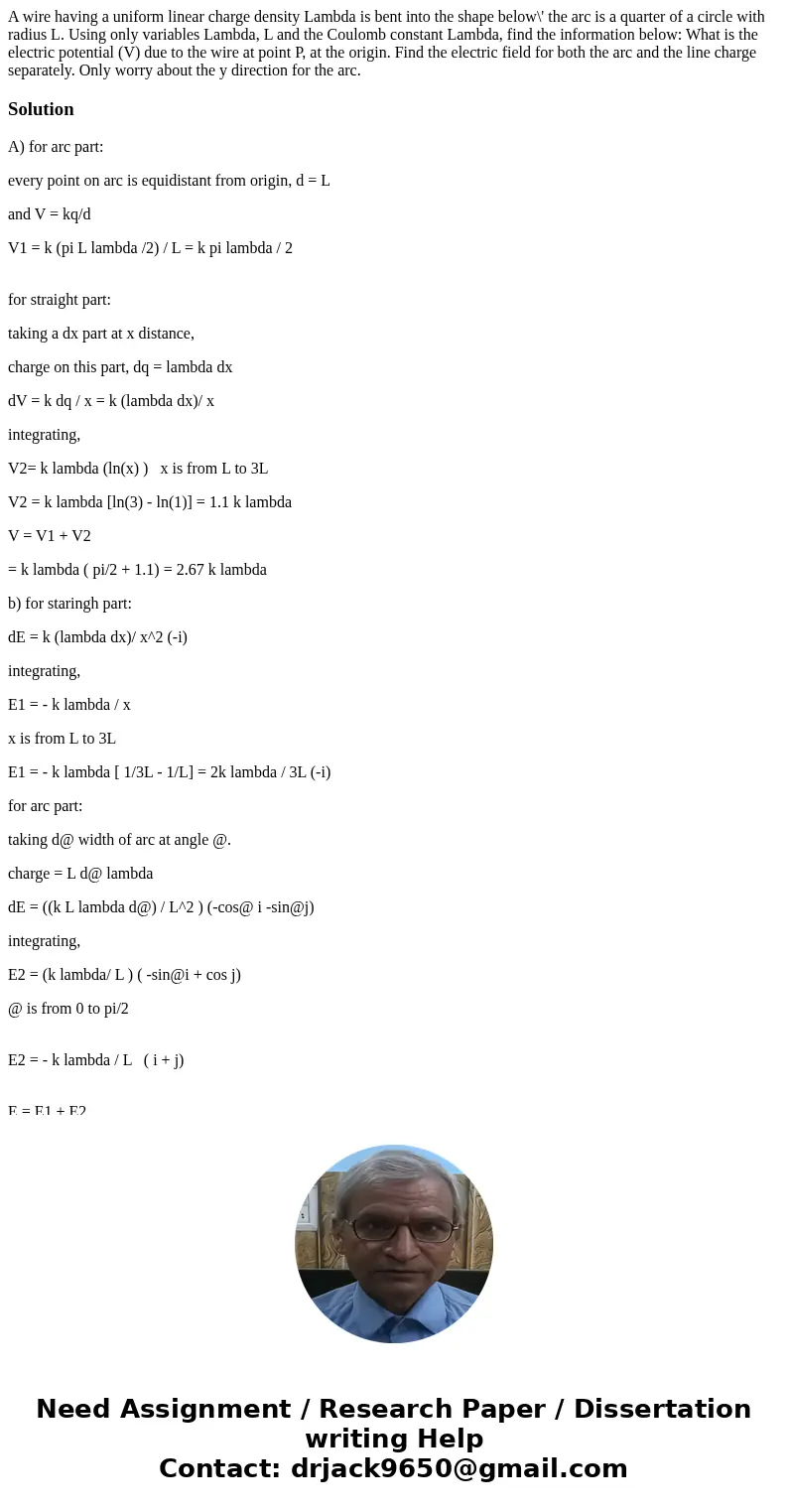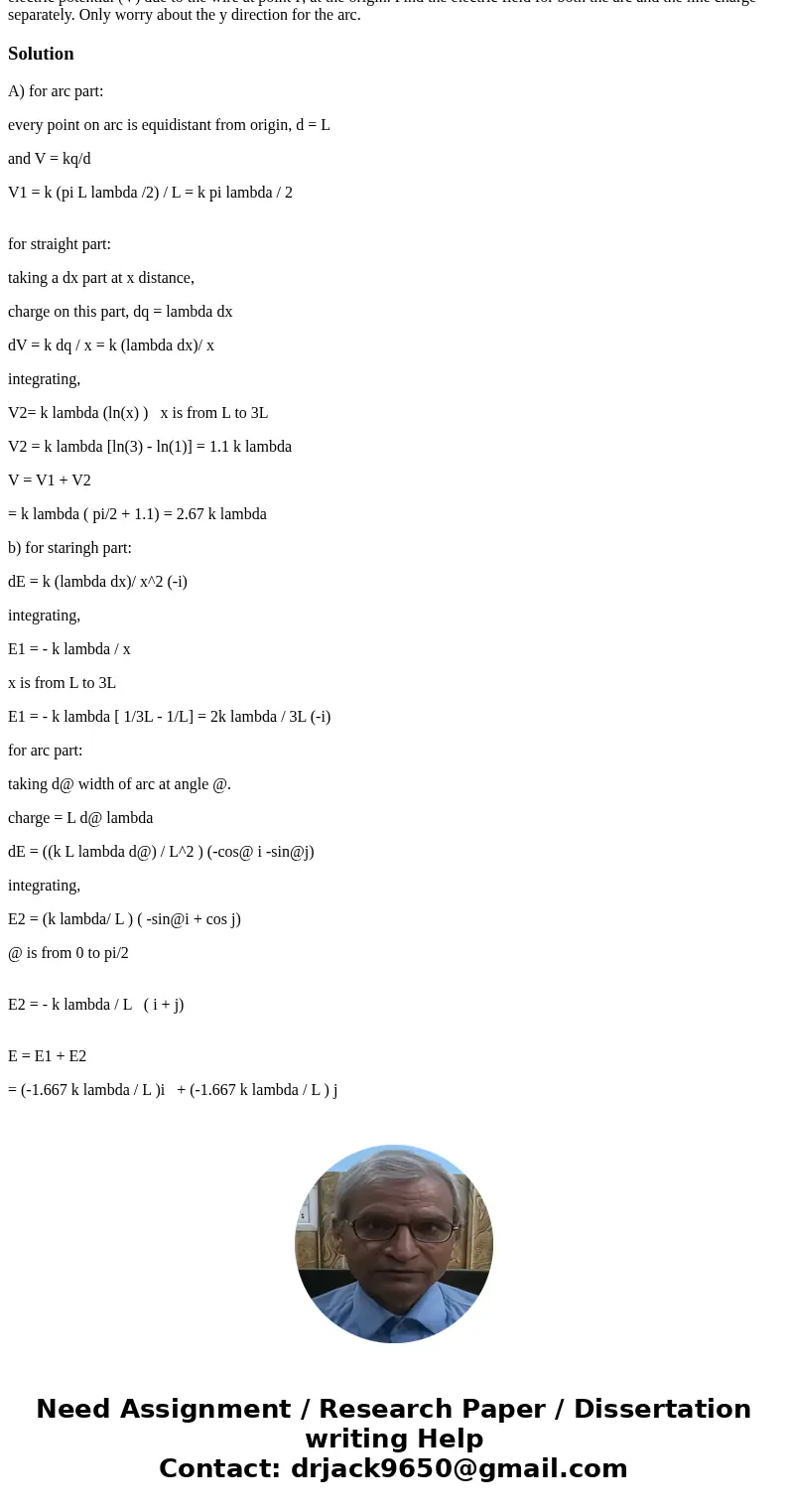A wire having a uniform linear charge density Lambda is bent
Solution
A) for arc part:
every point on arc is equidistant from origin, d = L
and V = kq/d
V1 = k (pi L lambda /2) / L = k pi lambda / 2
for straight part:
taking a dx part at x distance,
charge on this part, dq = lambda dx
dV = k dq / x = k (lambda dx)/ x
integrating,
V2= k lambda (ln(x) ) x is from L to 3L
V2 = k lambda [ln(3) - ln(1)] = 1.1 k lambda
V = V1 + V2
= k lambda ( pi/2 + 1.1) = 2.67 k lambda
b) for staringh part:
dE = k (lambda dx)/ x^2 (-i)
integrating,
E1 = - k lambda / x
x is from L to 3L
E1 = - k lambda [ 1/3L - 1/L] = 2k lambda / 3L (-i)
for arc part:
taking d@ width of arc at angle @.
charge = L d@ lambda
dE = ((k L lambda d@) / L^2 ) (-cos@ i -sin@j)
integrating,
E2 = (k lambda/ L ) ( -sin@i + cos j)
@ is from 0 to pi/2
E2 = - k lambda / L ( i + j)
E = E1 + E2
= (-1.667 k lambda / L )i + (-1.667 k lambda / L ) j


 Homework Sourse
Homework Sourse